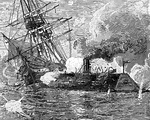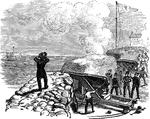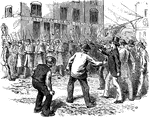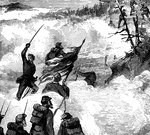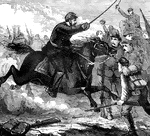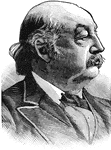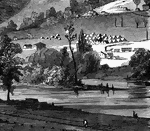
Grafton Occupied by Federal Troops
"View of Grafton, West Virginia, occupied by the Federal Troops, under the command of General McClellan,…
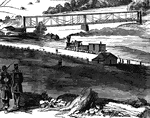
Railroad at Grafton
"View of Grafton, West Virginia, occupied by the Federal Troops, under the command of General McClellan,…
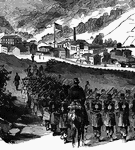
Federal Troops at Grafton, West Virginia
"View of Grafton, West Virginia, occupied by the Federal Troops, under the command of General McClellan,…
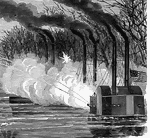
Bombardment of Fort Henry
"Bombardment of Fort Henry, Tennessee River, Tenn., by the Mississippi Flotilla, Flag Officer Foote,…

Bombardment of Fort Henry
"Bombardment of Fort Henry, Tennessee River, Tenn., by the Mississippi Flotilla, Flag Officer Foote,…
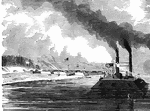
Bombardment of Fort Henry
"Bombardment of Fort Henry, Tennessee River, Tenn., by the Mississippi Flotilla, Flag Officer Foote,…
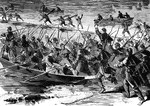
The Forlorn Hope
"'The Forlorn Hope.' Volunteers storming party, consisting of portions of the Seventh Michigan and Nineteenth…
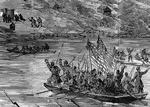
The Forlorn Hope
"'The Forlorn Hope.' Volunteers storming party, consisting of portions of the Seventh Michigan and Nineteenth…
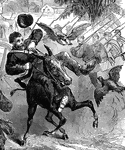
Foraging Spoils - Startled Horse
"Return of a foraging party of the Twenty-fourth Regiment, Connecticut Volunteers, with their spoils,…
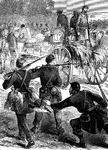
Foraging Spoils near Baton Rouge
"Return of a foraging party of the Twenty-fourth Regiment, Connecticut Volunteers, with their spoils,…
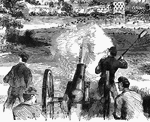
Battle at Dam No. 4
"Battle at Dam No. 4, Potomac River, between Butterfield's brigade and a large Confederate force. A…
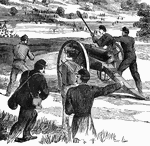
Battle at Dam No. 4
"Battle at Dam No. 4, Potomac River, between Butterfield's brigade and a large Confederate force. A…
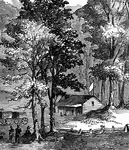
Battle of Cross Keys
"The Battle of Cross Keys- opening of the fight- the federal troops, under General Fremont, advancing…

Battle of Cross Keys
"The Battle of Cross Keys- opening of the fight- the federal troops, under General Fremont, advancing…
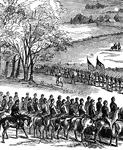
Battle of Cross Keys
"The Battle of Cross Keys- opening of the fight- the federal troops, under General Fremont, advancing…
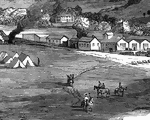
Village of Clarksburg
"Village of Clarksburg, Western Virginia, headquarters of General Rosecrans. Clarksburg, a post village,…
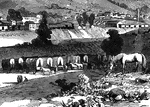
Village of Clarksburg
"Village of Clarksburg, Western Virginia, headquarters of General Rosecrans. Clarksburg, a post village,…
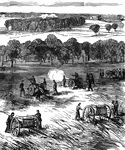
Valley of Chickahominy
"Valley of the Chickahominy, looking southeast from the vicinity of Mechanicsville, the scene of the…
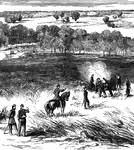
Valley of Chickahominy
"Valley of the Chickahominy, looking southeast from the vicinity of Mechanicsville, the scene of the…
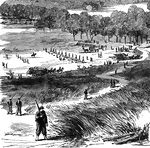
Valley of Chickahominy
"Valley of the Chickahominy, looking southeast from the vicinity of Mechanicsville, the scene of the…

Battle of Chancellorsville
"Battle of Chancellorsville, Sunday, May 3rd, 1863. General Hooker repulsing the attack of the enemy.…
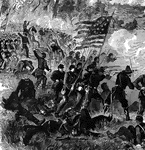
Battle of Chancellorsville
"Battle of Chancellorsville, Sunday, May 3rd, 1863. General Hooker repulsing the attack of the enemy.…
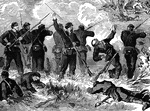
Battle of Chancellorsville
"Battle of Chancellorsville, Sunday, May 3rd, 1863. General Hooker repulsing the attack of the enemy.…
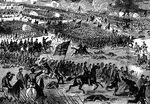
Battle of Champion Hills
"Battle of Champion Hills, May 16th, 1863- the formidable position of General Pemberton carried by Generals…
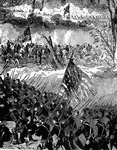
Battle of Champion Hills
"Battle of Champion Hills, May 16th, 1863- the formidable position of General Pemberton carried by Generals…
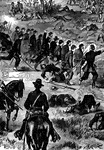
Battle of Champion Hills
"Battle of Champion Hills, May 16th, 1863- the formidable position of General Pemberton carried by Generals…
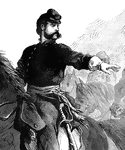
General Burnside
"Major General Burnside assuming command of the Army of the Potomac- issuing orders to his staff. 'Headquarters,…
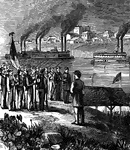
Bellaire
"Bellaire, O.- Steamboats conveying troops and munitions of war for the Federal forces on the Great…
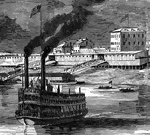
Bellaire
"Bellaire, O.- Steamboats conveying troops and munitions of war for the Federal forces on the Great…
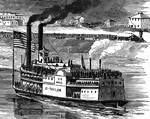
Bellaire
"Bellaire, O.- Steamboats conveying troops and munitions of war for the Federal forces on the Great…
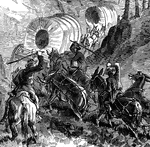
Baggage Train to Falmouth, VA
"Federal baggage train on its way to the army at Falmouth, VA., December, 1862. Our illustration represents…

Baggage Train Wagon
"Federal baggage train on its way to the army at Falmouth, VA., December, 1862. Our illustration represents…

Battle of Antietam
"Battle of Antietam, Burnside's Division, left wing- brilliant and decisive bayonet charge of Hawkins's…

Battle of Antietam
"Battle of Antietam, Burnside's Division, left wing- brilliant and decisive bayonet charge of Hawkins's…
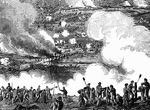
Battle of White Oak Swamp Bridge
"Battle of White Oak Swamp Bridge, Monday June 30th, 1862- Ayres's, Mott's and Randall's batteries checking…

Battle of White Oak Swamp Bridge
"Battle of White Oak Swamp Bridge, Monday June 30th, 1862- Ayres's, Mott's and Randall's batteries checking…
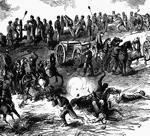
Battle of White Oak Swamp Bridge
"Battle of White Oak Swamp Bridge, Monday June 30th, 1862- Ayres's, Mott's and Randall's batteries checking…
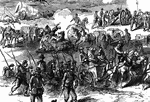
Battle of White Oak Swamp Bridge
"Battle of White Oak Swamp Bridge, Monday June 30th, 1862- Ayres's, Mott's and Randall's batteries checking…
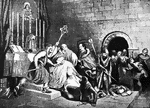
Death of Becket
"Death of Becket. During the early years of the reign Thomas A. Becket, as the king's chancellor, had…
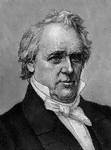
John Brown
In 1859, John Brown collected a small body of men, white and black, in the mountains of Maryland. He…
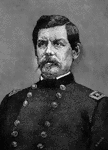
George B. McClellan
"George Brinton McClellan was born at Philadelphia, December 3, 1826. He was for two years a student…
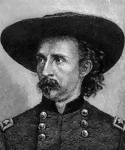
George Armstrong Custer
"George Armstrong Custer, a brilliant cavalry officer, was born at New Rumley, Ohio, December 5, 1839.…

Badge of the Grand Army of the Republic
"The Grand Army of the Republic was a patriotic organization in the United States composed of the National…

Badge of the Grand Army of the Republic
"The Grand Army of the Republic was a patriotic organization in the United States composed of the National…

Badge of the Loyal Legion
"The Military Order of the Loyal Legion is the first society formed by officers honorably discharged…

Badge of the Army of the Cumberland
"The Army of the Ohio was a division of the Federal army in the Civil War; organized in 1861-1862 by…

Badge of the Army of the Potomac
"The Union forces which operated in Virginia in the Civil War were known as the "Army of the Potomac."…
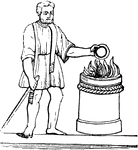
Centurio
"The commander of a centuria or company of infantry, varying in number with the legion. The century…

Corona
"A crown, that is, a circular ornament of metal, leaves, or flowers, worn by the ancients round the…

Corona
"A crown, that is, a circular ornament of metal, leaves, or flowers, worn by the ancients round the…

Cavalier
What a Cavalier wore. The name Cavalier originally related to political and social attitudes and behaviour,…

Roundhead
What a Roundhead wore. Roundhead was the name given to the supporters of the Parliament of England during…
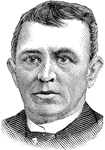
Henry W. Grady
A journalist and orator who helped to reintegrate the former Confederacy into the union after the Civil…
